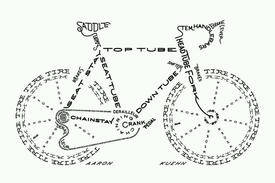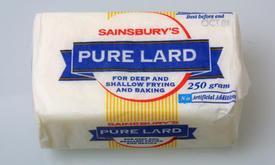Advice on puncture repair please

katozdad
Posts: 296 Member
Hi,
I have been through two tubes these last couple of months, and would appreciate some advice on how best to approach this problem.
When I get a flat, I use a super patch which instantly glues to the tube and leaves me free get on with my ride. However, these last couple of months I have had bubbles develop under the patch from the original puncture which eventually blows out a day or two after the original repair. Obviously getting a decent seal over the old patch after I have ripped it off is difficult and I find myself having to replace the tube.
I'm thinking of getting a couple of replacement tubes so that I don't have to worry about repairing the puncture by the side of the road, especially now it is getting dark, but I'm looking for a reliable solution that will stop me replacing my tube every two minutes.
Thanks all in advance.
I have been through two tubes these last couple of months, and would appreciate some advice on how best to approach this problem.
When I get a flat, I use a super patch which instantly glues to the tube and leaves me free get on with my ride. However, these last couple of months I have had bubbles develop under the patch from the original puncture which eventually blows out a day or two after the original repair. Obviously getting a decent seal over the old patch after I have ripped it off is difficult and I find myself having to replace the tube.
I'm thinking of getting a couple of replacement tubes so that I don't have to worry about repairing the puncture by the side of the road, especially now it is getting dark, but I'm looking for a reliable solution that will stop me replacing my tube every two minutes.
Thanks all in advance.
0
Replies
-
get spare tubes, find the source of the puncture (obviously) and swap out the tube. Mend the tube when you get home - preferably using a proper old-school "vulcanising" kit, rather than the "superpatch" ones. I've found that even the best quality ones are, at best, a get-you-home solution, rather than a permanent repair - especially on my roadbike - as 115-120psi is a tough ask for any patched tube. A proper "put on the glue, let it dry, then put on another layer of glue, let it dry, then put on the patch, cover it with french chalk, put it under a weight for 6-8 hours, take it out, check for leaks, add a little more french chalk, then put it back into "rotation" ready for the next visitation of the Pun***re fairy" has a much better chance of staying on permanently.
Better still - if you're commuting, and it's winter and dark, and cold and wet. Get some seriously puncture-proof tyres - prevention is FAR better than cure. Last year, on my roadbike, I ran a pair of Vittoria Open Pave Evo CG's for over 3000 miles in all weathers without even a suggestion of a flat. Better yet, they roll nearly as well as my summer tyres (Continental GP4000's) albeit a little heavier and stick to the road like 5hit to a blanket. Unsuprising really - they're the Clincher (open) version of the Tubulars that were designed for riding/racing the spring cobbled classic races.0 -
New tubes. Patches only hold so long and the last thing I'd want to have happen is be stranded out somewhere due to patch failure.
After I patch a tube the only time I use it is on the trainer.0 -
I carry a spare tube, I don't have time to patch on the road.
In my tiny under seat kit, I carry the tube, 2 tire irons, a 16 gram CO2 cartridge and fitting. I'm good for one flat that way.
I use Specialized All Conditions Elite tires. I can make them last 1,200 miles if I rotate them at 800 miles.0 -
I always carry spare tubes and deal with punctured tube when I get home.
Hope I'm not teaching you to 'suck eggs' when I say 'make sure that you thoroughly check the tyre when fitting a new tube on the road-side as the implement that caused the puncture may still be in the tyre'.
Like 'yin said, the self-adhesive puncture patches are nowhere near as good as the 'traditional' method of repair.0 -
Thank you all for your contributions. I have bought myself 2 spare tubes, only because they came together in a pack and will go for the 'repair at home option' with a decent puncture repair kit. I am also considering using one of the old tubes with the valve chopped out to line the inside between the tube and tyre to offer greater protection. Theoretically, I can't see this being a problem apart from stuffing it into the tyre straight in the first place.
Kind rgds,
Carl0
This discussion has been closed.



